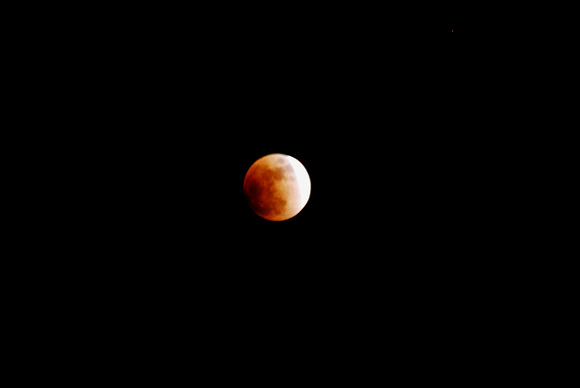Lunar Eclipse, February 2008
Taken w/Nikon D200, 70-300mm lens, FL 300mm, f/5.6, 1/3 second, ISO400
A lunar eclipse occurs when the moon passes behind the earth such that the earth blocks the sun’s rays from striking the moon. This can occur only when the Sun, Earth and Moon are aligned exactly, or very closely so, with the Earth in the middle. Hence, there is always a full moon the night of a lunar eclipse. The type and length of an eclipse depend upon the Moon’s location relative to its orbital nodes. The next total lunar eclipse will occur on December 21, 2010. Unlike a solar eclipse, which can only be viewed from a certain relatively small area of the world, a lunar eclipse may be viewed from anywhere on the night side of the Earth. A lunar eclipse lasts for a few hours, whereas a total solar eclipse lasts for only a few minutes at any given place. Some lunar eclipses have been associated with important historical events.


